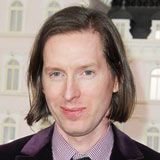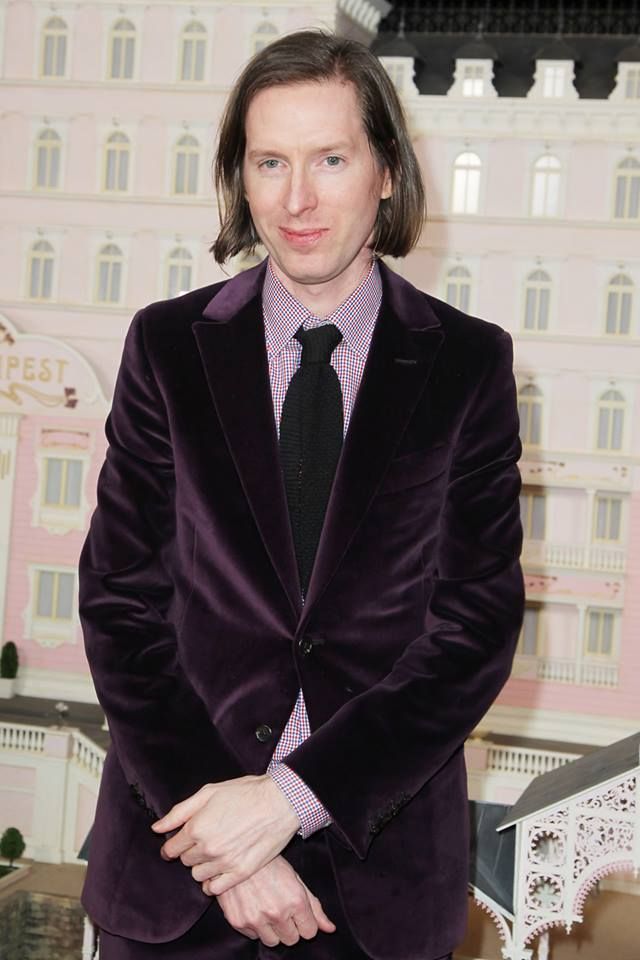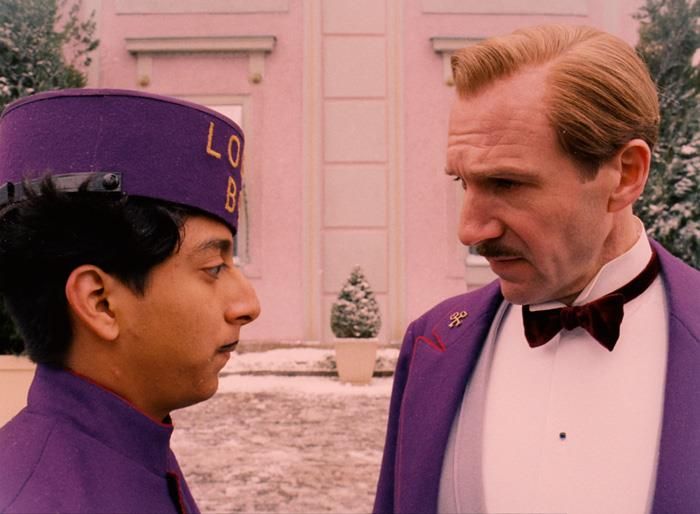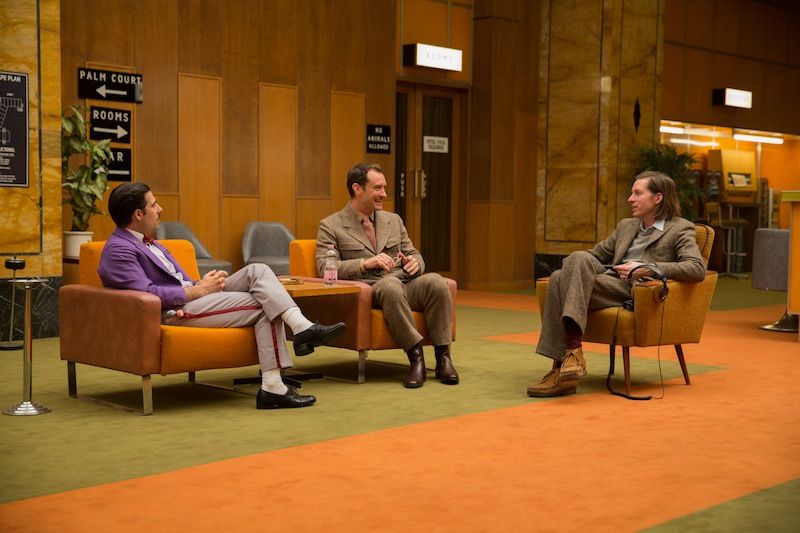If it’s fair to accuse Wes Anderson of making movies that open up like dollhouses, then The Grand Budapest Hotel is, at the very least, his biggest and most detailed one so far.
From his first film Bottle Rocket to now, Anderson has been a singular purveyor of specificity: the typographic font of his title cards, the fabric of his characters’ costumes, and the minutiae of their lives. And his latest effort seems to encapsulate, and integrate, the world-building that’s synonymous with his work as well as the emotional nuance, and depth, that he imbues in each of those details.
Anderson spoke with Spinoff Online at the recent Los Angeles press day for The Grand Budapest Hotel, where he laughed at the prospect of squaring off with 300: Rise of an Empire at the box office. Teamed up with his production designer, Adam Stockhausen, Anderson offered insights into the creation of this film’s world, and his cinematic universe as a whole, and reflected on the relationship between the filmmakers and storytellers who influenced him, and those he influences with his own work.
Spinoff Online: Which came first, the character Gustav or the design of the hotel?
Wes Anderson: The first part of the script, I wrote it with my friend Hugo [Guinness] – we came up with it, like, six years ago, it was the first part of the Gustav story. We had that character and we had that inspiration in real life for this character. We wrote a section of it but we couldn’t really figure out what happened next. There was no hotel and he wasn’t a concierge or anything. It was only many years later when I had become interested in Stefan Zweig’s work, which I’d never read before, and I had this thought to do something rather Zweig-like, and to use this character we had and this bit of story we had and this idea that it would be in a hotel and Gustav would be a concierge. Then it all seemed to have the key ingredients. We wrote the thing very quickly after that. The [design of the] hotel came in later.
How did you come up with the design of the hotel after you had Gustav in place?
Adam Stockhausen: The hotel grew out of the location. It’s the department store, which is called the Warenhaus now. We were calling it the Cop House, when we were there.
Anderson: What is the Warenhaus?
Stockhausen: The House of Wares. Gorlitz’s Warenhaus appears to be the name of the place.
Anderson: I just think of it as the department store.
Stockhausen: It was the perfect spot, and it has a structure of its own with this soaring atrium and beautiful chandeliers and stained-glass ceiling.
Anderson: It has a vaulted staircase that crisscrosses over it.
Stockhausen: It even had the concierge area that’s the perfect spot, so really …
Anderson: It was probably for returns [in the department store]. We had been looking together at all these old images of hotels. So we had all this research and all these ideas and we scouted around looking at other things. So we had all these inspirations to sort of apply when we had this place. It turned out to be a great discovery, that department store.
Jeff Goldblum on Checking in to The Grand Budapest Hotel
In some pretty impressive counterprogramming, your movie opens opposite 300: Rise of an Empire, which is set entirely on green-screen sets. Can you talk about the difference between using practical sets versus green screen? Would you ever consider doing a movie that’s green screen like that all the way through?
Anderson: I was trying to think of some joke about how it was very smart of them to program against us. They know we’re not the same audience. I don’t really love doing green screen. I don’t have much fun shooting on green screens. I would rather we make something. [To Stockhausen] What did we do that way in this?
Stockhausen: That could have been green-screen work or was?
Anderson: I don’t know. I’m just throwing it over to you.
Stockhausen: We went with the miniatures, which was a lot of stuff: there was the introduction to the hotel, the mountaintop observatory and the whole skiing/sledding/bobsledding sequence. It was all miniature work, and it’s much more — old-fashioned way is one way to put it — but it’s also an older way of doing the exact same thing but it’s a handmade way of doing the exact same thing, and it’s a lot of fun. But it’s a good 300: Rise of an Empire counterprogramming. (Laughs)
Anderson: The thing is also, when we do this stuff, we use some paintings, we use some miniatures, we use some stuff they might have used in Georges Melies-type movies, as old as anything. But it’s digital galore. I mean, at least half of the shots in the movie have some kind of digital element -- something we’ve modified or polished or sped up one thing in the frame or replaced a bit of signage and all of that kind of stuff. It’s an amazing kind of luxury, yeah.
Wes, you wrote this for Ralph Fiennes. What would you have done had he said no? Since you have this sort of repertory company with Owen Wilson and Bill Murray, do you write your screenplays imagining them in the roles?
Anderson: Sometimes I may have more of them in mind. This time, I just had Ralph. Over the years, I’ve discovered the way to make somebody not want the part is to offer it to them. Maybe it’s just psychology. Maybe it’s just actor psychology. Because I was so locked into it — I only do one movie at a time — I don’t have six scripts sitting around and think, “If this one doesn’t go, I’ll do the other one” — this is all I’ve got. And I’ve only got one guy that I thought could play this so I was very anxious about it. So I don’t think I would have accepted him saying “no.” I would have been all over him and, at a certain point, he probably would have had to break down. The hardest thing to get past is if an actor is going to direct a movie, it’s hard to pull somebody out of that. He was just finishing [The Invisible Woman]. If the timing had been different, I could have been waiting a year and a half for him.
He’s known for being dark and dramatic but he’s playful in this, as he was in In Bruges.
Anderson: He’s so funny in In Bruges. But yeah, it does have dismembering and stuff like that. That, to me, seeing him in In Bruges, I could see him playing a funny character. I also had seen him in a play, the British version of God of Carnage. He played the part that eventually was played by Christoph Waltz in the movie. He was great and so funny in that. I don’t usually think about if somebody’s been in a comedy or not. I just think if they’re really good and they’re right for the part, then they’ll be fine. There are people that could do a turn at this character but I couldn’t think of anybody that I thought could seem like a real person, like this was a real person you might meet. To me, that’s what he did.
The author in the movie says the world sort of brings the characters to him. Do you feel that’s accurate for the way you develop your stories? And when you feel that it congeals not just into a series of events or sort of a plot but into a bona fide story?
Anderson: I like “sort of a plot,” which is probably about right. What was the first part of your question?
Do you feel like the world brings the characters to you?
Anderson: No, I don’t. What that author says is not expressing my views at all. I will say this character played by Ralph was brought to me by being my friend — the inspiration for him was a real person. But it wasn’t like somebody came to me and said, “Here’s an idea for a story.” I’ve never had that happen to me in a way that meant anything to me. That comes directly from Stefan Zweig — his introduction to this book Beware of Pity. It’s adapted from that, on the edge of plagiarism, but it’s public domain anyway. But I have this thought also, which is I would argue that even Zweig didn’t particularly believe what he was saying there, because he made these very psychological stories. They’re very tormented characters and interesting stories with plots and sweep. But he sort of has a way of telling the stories; these sometimes intimate stories, as if they were tales, like Kipling or Conrad, or something like that. He gives them a real storyteller thing. To me, he’s exactly the kind of writer who would say, “It might make it a little more mysterious if I do a bit at the front where I say, ‘Oh, it happens …’ He could do this as sort of a concoction to make the experience of the story better rather than he actually has this view he wants to share about it, if you see what I mean. It’s almost a formal thing, almost.
How did you decide to shoot the film using multiple aspect ratios?
Anderson: Well, I always wanted to do a movie in that just, uh, square shape. And every movie before 1950-something was done that way – it’s the look you associate with movies of the period of our story. But I always wanted to do it with a movie that wasn’t a period movie; I just liked that shape, I liked that connection to movie history. But it used to be that – well, Bottle Rocket we wanted to do that way, and Polly Platt, who was the producer of Bottle Rocket, Polly was the one who said, we had shot our short and it was 16mm, so it was just normal that it’s that shape, so Polly and I were sort of saying, what Polly and I wanted to do was shoot Bottle Rocket in black-and-white, academy ratio. But in those days you could then screen the movie at like LACMA or something, or you could go to like the Nuart, but you couldn’t release it in multiplexes. In the case of that movie it wouldn’t have mattered, because nobody went to see it at any multiplexes, so it would have been fine. I mean, it wouldn’t have held us back – we still would have broken the $500,000 gross barrier, I’m sure, because that’s what we did. So that was something I always wanted to do.
But then the idea of having different shapes just sort of came out of, “but now we have this ‘60s part, but that’s not particularly suited to the academy ratio because it doesn’t represent that time.” And then, now, because it’s digital, in those days to project it, you would have to change the gate in every projector, you would have to change lenses and things, and it would be a technical issue. Now that everything is finished digitally, they just press a button and whatever you do is going to be up there. So that’s a long-winded way of saying the reason we did it is because now you can, and it used to be really that you couldn’t. And we’re so used to looking on YouTube and seeing things change shape all of the time – and we don’t even notice it. And then in answer to the obstacles or challenges, the obstacles or challenges was the lawyers or whoever the lawyers were, as soon as they read this, [they’re like] “Whoa, whoa, whoa. You’re obligated to deliver a movie in the aspect ratio of 1.85:1 or 2.35:1 at a length of between 90 and 120 minutes.” So then we have probably $70,000 of legal arguments that are all billed just straight back to someone, at the end of which is me saying, “no, it’s okay, it’s okay, it’s going to be fine.” My only legal argument I could make, and it eventually just sort of blew over and we just did it.
They call this the golden age of television. Can you imagine ever doing television, even a limited series? This feels like a sophisticated Fawlty Towers, almost.
Anderson: Yeah, I mean, I would. I think the thing with a TV show, first of all, you’ve got to like settle into one place and stay with this one project for this extended period of time. And I sort of like to do a thing and finish it and then I’m on my next one, and it has a shape over the course of the years. And I’m not dying to say, “With luck I’ll be on location in North Carolina for six months of the year, every year for the next seven years.” I would rather have different chapters of my working life, if that makes any sense. And that’s if the show works – if you get a hit show, you get seven years in North Carolina. If you don’t, that’s another bad-case scenario of just being canceled.
Given the tragedies and the wartime context that surrounds this whimsical story, how tough was it to determine what more serious or violent moments to focus on and which ones to kind of ignore or underplay?
Anderson: You know, I think probably the answer is thinking about it, worrying about it, trying a little bit of this and a little bit of that during the writing process. But then the other answer is probably I don’t really know – I’m just going with what feels this way or that way. But somebody asked me that question in Berlin, and it’s funny because he asked me a similar version of this question: he asked, “How do you balance the darkness of this period and what’s looming and what’s ahead, and the fact that this is a comedy? And how did you decide” – just the way you’re saying, to emphasize this and where our story is going and all of that. And I said to him, “I don’t remember balancing it, I just remember doing it.” But then I thought about it, and just by chance I happened to see the same person who asked me this question, one week later in New York, and I answered this person with what I thought, which was, every 20 minutes or so of this movie, somebody gets their fingers chopped off or decapitated or stabbed or shot – there’s blood all through this movie. And I hadn’t really even contemplated that. I was doing some color grading in Paris, and my friend came to sit with me and he brought his daughter and she started covering her eyes, and then I started going, “Oh, no, get ready for this part right here,” and I had never really thought about it that way. Most of the violence in the movie I had thought in some way was funny violence, even if it was quite brutal, like when he escapes from prison and these guys get stabbed and there’s blood everywhere. But I think that’s why the blood is there, I think that’s why the violence is there – it’s because there’s a brutality that’s coming, a brutality that’s building in the world and it’s getting ready to be this suicide of this whole region. And maybe that’s the answer.
Your style is so synonymous with your name. How does it feel that people compare other movies to yours, or that people say, “I want to make a movie like Wes Anderson does?”
Anderson: Well, it’s pretty good. I like that. I think usually I might not have seen if they’ve done that or not. But I just think that’s nice. I know my – I know who my inspirations have been, and how closely I’ve wanted to do something like this person, that person, and how many ideas I’ve stolen from these guys and how many things I’ve just literally recreated what other filmmakers did. There’s a sequence in this movie where Jeff Goldblum is [being chased], and it’s very closely modeled on a scene in Torn Curtain, the Hitchcock movie. And so I think it’s nice that there’s a continuity and you can see people kind of take something from the other and make it in a new way.
The Grand Budapest Hotel is in select theaters now.





